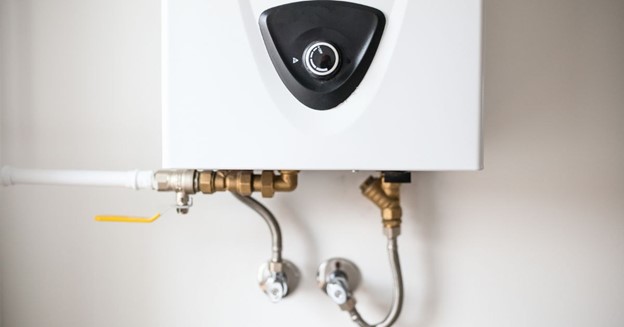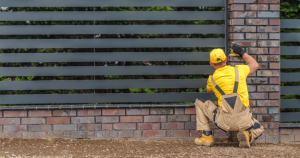What’s the Difference Between Roof Replacement Vs Reroof?
Confused about roof replacement vs reroof? Learn the key differences, costs, pros, and cons to help you choose the right solution for your home.
If your roof has started showing signs of age, leaks, or visible damage, you’re likely weighing your options: roof replacement vs reroof.
These two terms often confuse homeowners, but they point to very different approaches with different timelines, costs, and long-term outcomes.
Before you make a decision that affects your home’s value and safety, it’s crucial to understand what each one really involves, and which is the better fit for your situation.
What Is Roof Replacement?
Roof replacement means removing your entire existing roof down to the decking or sheathing and installing a completely new roofing system.
This is a full-scale job that typically includes:
- Tearing off all old shingles or roofing material
- Inspecting and repairing the underlying wood structure
- Installing a new underlayment (usually waterproof)
- Laying new shingles or roofing material
This process gives your home a fresh start from the bottom up, which is especially important if the damage is deep or structural issues are present.

When Roof Replacement Makes Sense
A full roof replacement is often the better (and only) option when:
- There are multiple leaks across different areas
- The roof has significant storm or hail damage
- You’re seeing rotting, sagging, or structural issues
- The shingles are curled, missing, or heavily deteriorated
- The roof is 20+ years old and well past its expected life
You’ve already done a reroof before (most areas only allow one additional layer)
In short, replacement is about long-term protection, safety, and potentially increasing your home’s resale value.
Pros of Roof Replacement
- Full inspection of deck and underlayment for hidden issues
- Allows for a longer lifespan compared to layering over an old roof
- May qualify for better warranties
- Boosts curb appeal and home value.
- Required if you want to switch roofing materials
Cons of Roof Replacement
- More expensive upfront (labor and materials)
- Takes longer to complete (typically 3–5 days)
- May involve permits and inspections, depending on your area
What Is Reroofing?
Reroofing (also called roof overlay) means placing a new layer of shingles or roofing material over the existing one — without removing the original layer.
- It’s quicker and more affordable, but it comes with limitations.
- Reroofing is only an option if your current roof:
- Has only one existing layer (two max in most local codes)
- Is not severely damaged or leaking in multiple areas
- Has a solid underlying structure with no rot or sagging
- It’s a surface-level fix meant to restore your roof’s appearance and function without a full overhaul.

Pros of Reroofing
- Significantly less expensive than replacement
- Faster project time (can often be done in a day or two)
- Doesn’t require removing old materials (less mess, less labor)
Cons of Reroofing
- Doesn’t address hidden problems under the shingles
- Adds extra weight to the structure (not ideal for older homes)
- Shorter lifespan than a full replacement
- Not suitable if the current roof is heavily damaged or already reroofed once
- May void some warranties or reduce resale value
Cost Comparison: Roof Replacement vs Reroof
Here’s a quick side-by-side breakdown of average costs in 2025:
| Project Type | Cost Per Square Foot | Total Cost (1,500 sq ft roof) |
| Reroofing | $4 – $8 | $6,000 – $12,000 |
| Roof Replacement | $7 – $14+ | $10,500 – $21,000+ |
Keep in mind: exact costs vary based on your location, the roofing material you choose, and the pitch and complexity of your roof.
Which One Adds More Value to Your Home?
If you’re thinking about selling in the next 5–10 years, a full roof replacement typically offers a better return on investment (ROI).
According to Remodeling Magazine’s Cost vs. Value report, roof replacements can recoup around 60–70% of their cost in home value.
Reroofing may improve your curb appeal temporarily, but savvy home inspectors and buyers often view it as a band-aid fix.
How to Decide: Reroof or Replace?
If you’re still stuck on the decision, ask yourself these three key questions:
What’s the age of your current roof?
If it’s over 15–20 years old, replacement is usually smarter.
Are there active leaks or water stains?
These are signs of deeper issues that reroofing might not fix.
Have you already reroofed once before?
Most building codes don’t allow a third layer due to weight and fire safety concerns.
Pro Tip from a Local Expert
If you’re unsure, it’s always best to get an evaluation from a qualified local roofer.
A trusted Roofing Contractor Northville from Horizon Roofing and Construction, can inspect your roof in-person, explain what’s going on under the surface, and recommend the safest, most cost-effective path forward for your home.
Common Myths About Reroofing and Replacement
Myth 1: Reroofing is just as good as a full replacement.
Not true. While it might look similar from the street, it doesn’t resolve hidden problems like rot or mold.
Myth 2: You can always just add a second layer.
Building codes often limit you to one extra layer, and even that depends on the structure’s load-bearing capacity.
Myth 3: Insurance always covers full replacements.
Only if the damage was caused by a covered event like a hailstorm or fallen tree — wear and tear won’t qualify.
The Role of Inspections & Building Codes
Whether you choose to reroof or replace, make sure you understand your local building codes. In many cities:
- You cannot have more than two layers of roofing material
- A permit may be required for roof replacements
- Inspections may be done post-installation to ensure safety and code compliance
- Skipping this step can cost you big if you’re fined or forced to redo the job down the line.
Final Verdict: Roof Replacement vs Reroof?
Choose reroofing if your roof is relatively young, has no deep damage, and you just want a fast facelift.
Go with a roof replacement if you see major wear, water damage, or want the most reliable protection for the next 20–30 years.
Wrap-Up
Choosing between roof replacement vs reroof isn’t just about budget — it’s about peace of mind, safety, and how long you want to go before thinking about roofing again.
Take the time to get a professional inspection, weigh your home’s current condition, and plan your next step based on long-term value — not just short-term savings.
If you’re near Northville and need guidance, always consult with Horizon Roofing and Construction to avoid guesswork and get the job done right the first time.













